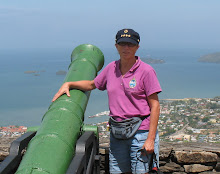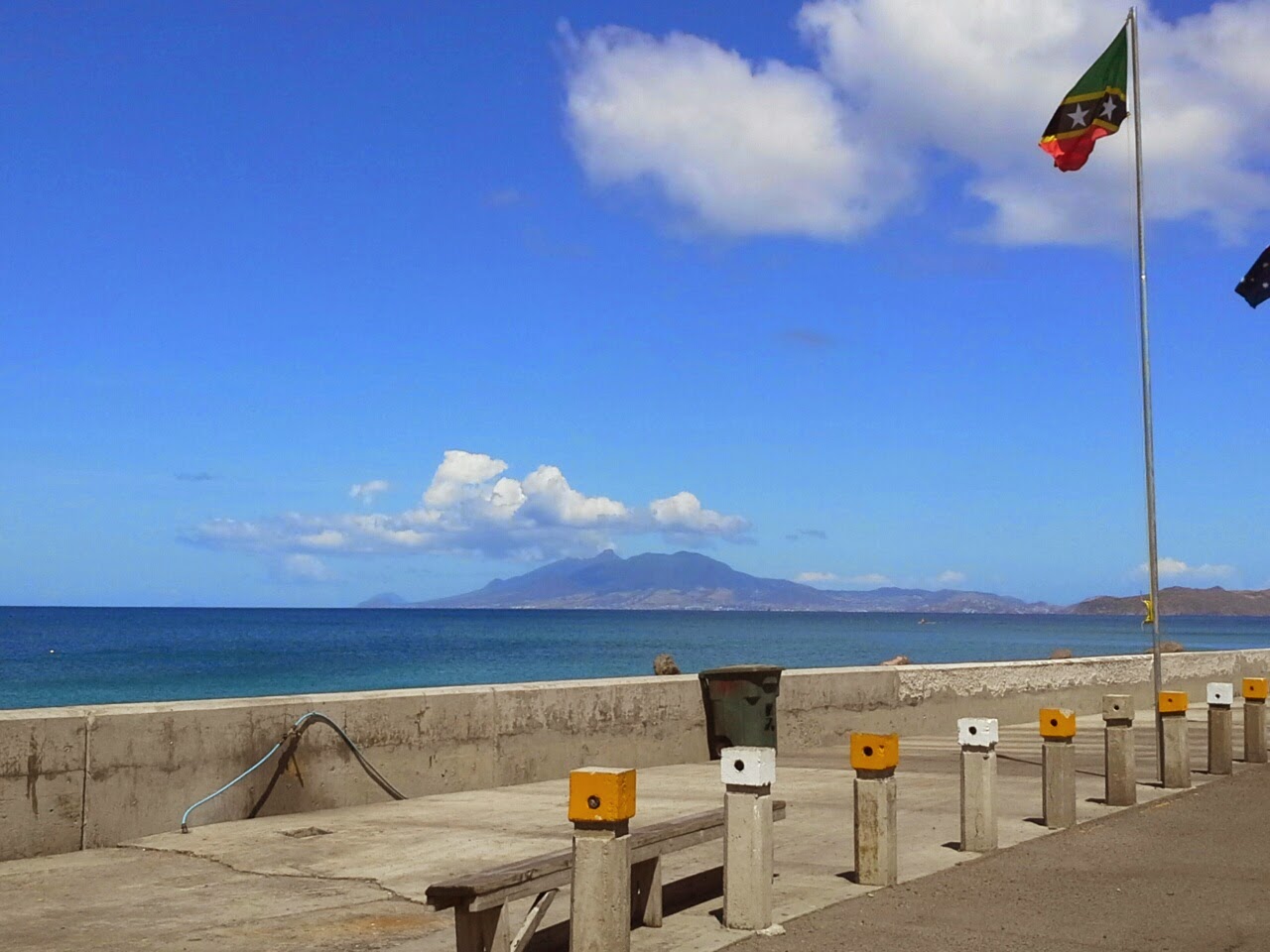For the past several years, the Royal Ocean Racing Club has
run its Caribbean 600 from Antigua. The Caribbean 600 is the warmer, shorter version
of RORC’s Fastnet Race. It is also, I gather, more interesting.
The Fastnet is a 601-mile race from Cowes, past Land’s End,
to Fastnet Rock off the southwest coast of Ireland. Then it’s back, outside
Bishop Rock, to Plymouth. The whole race is in a more-or-less straight line out and another back (always remembering that boats really only go straight before the wind; on the
wind, they must tack, so courses are far from straight).
The Caribbean 600 is a mile shorter than the Fastnet and is
all a tangle in and out of the islands, from as far south as The Saints to St.
Martin in the north. The following map will save me a thousand words.
The course is marked by the red line.
All the boats have trackers, some of which even work.
Each boat (with a functional tracker) is represented by one of the boat shaped thingies.
Here is a larger view:
The start and finish line is off the south coast of Antigua,
under Fort Charlotte at the mouth of English Harbour
WW has volunteered for finish-line duty for a couple of
years and, this year, I was invited along as well. I made it clear that I am
less than thrilled with the midnight-to-four slot (which I once had to do
because WW’s fellow volunteer backed out at the eleventh hour, could he find a
replacement, etc.) and almost as unenthusiastic about four-to-eight. Since
Queequeg, WW’s clarinet buddy, was in charge of finish-line volunteers, I was
pandered to. Nice feeling.
We had a meeting. Then we had another meeting at which we
were fed free drinks and given pea-green T-shirts with the Caribbean 600’s
blue-and-orange logo and "Race Crew". Yum.
The race started on Monday, February 24, between 11 and noon
with four starts for four different classes.
Boats milling about before the race.
The red mark ahead of the big black sail is the seaward pin of the starting line.
The beautiful Adela prepares to race.
Classic yacht Mariella prepares to race
while another class gets under way.
After the starts, we hiked up to Shirley Heights for lunch.
It’s a hot, exposed, dry, sun-baked, steep, hillside climb. We were very moist
by the time we reached the top, and very happy to guzzle down some lovely cold
water.
After lunch, we decided to make the descent via the Jones
Valley Trail, which has the great advantage of being almost entirely in the
shade. As we went, WW started a new game: red gum tree. This is a bit like the
Volkswagen game we used to play as kids on long drives, trying to spot the most
beetles as we motored along. The red gum tree, like the Volkswagen beetle, is distinctive. Our downward hike was punctuated with cries of “red gum
tree!” I won (but only because I was in front on the narrow trail, so them all before he did).
Red gum tree!
Finish-line volunteers started work on Wednesday, when the
first boats put in an appearance. The last boat crossed the line (on our watch)
at 10:05:59 on Friday.
There must be two volunteers because one is in charge of
making or maintaining radio contact with the incoming boats, to keep in touch
with Antigua and Barbuda Search and Rescue (ABSAR) in case a racing boat is
having problems, and to sit at the finish line a blast a blast on the air horn
as the boat crosses. The second person is recording their time, sail number and
any comments, and providing any information the radio handler may need. If many
boats are arriving within minutes or seconds of each other, it can be a bit
hairy. If a boat doesn’t communicate, you may be peering through binoculars
trying to read sail numbers that look remarkably small and are moving up and
down in an annoying fashion. After dark, these difficulties are only
compounded.
A finisher seen from Django's cockpit.
Fort Charlotte is up and to the left.
WW and I would cross from Django to the Galleon Beach dinghy dock, then take the trail up to Fort Charlotte. I made him stop, at one point, to be a scale object in this photo taken on the way:
What a bougainvillea can do if it puts its mind to it.
We had two boats on our first four-hour stint, one each on
our second and third. Not exciting, but one of the boats we finished was our
Tot Club friend Jonty’s boat Sleeper
VIII. Another friend Frank met Jonty with a RIB full of cold beer—very welcome
after three days’ hard sailing.




































